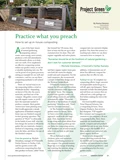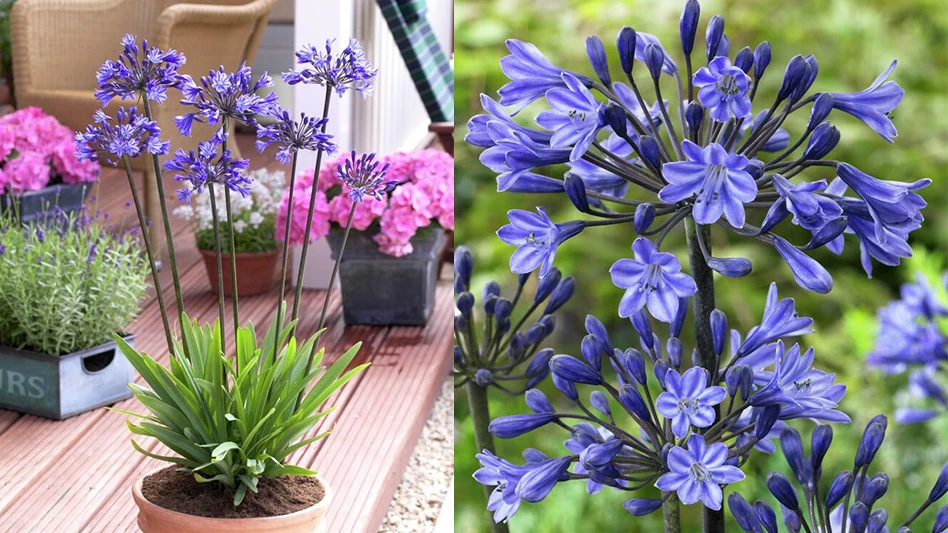
As one of the basic tenets of natural gardening, composting reduces waste, saves energy, saves money, produces a rich soil amendment, and ultimately allows us to help save our earth. If we implement an effective composting system within our garden center, it can be a valuable marketing tool, too. We can be proud of our green practices, setting an example for our staff and customers – and we can use these composting methods to sell related products.
There are myriad ways to set up composting within a retail or wholesale facility – depending on layout of the site, the source materials, and final use of the compost. All garden centers wind up with organic waste, so you’ll have the materials needed to produce compost. Most garden centers have some planting areas that would appreciate a steady application of finished compost. Some may use finished compost in their growing operation. The question of “How?” is ultimately in the hands of your staff, who can best design the system to efficiently gather the raw materials, choose a method of composting, assign and train the labor, and direct the use of the finished compost.
Michele Deranleau, manager of O’Donnell’s Fairfax Nursery in Fairfax, Calif., said her garden center sells earthworm composting bins that they produce in-house, called “From the Ground Up.” Of course, they have at least one bin set up to show customers how it’s done. They sell organic vegetable and native plants, and their organic matter waste goes into both the worm bin display model and yard composters. For the yard composter, she recommends a simple welded wire design out of the Western Garden Book.
Paul O’Donnell’s nursery has been organic for 18 years, and Deranleau said the customers really appreciate the “green” focus. The company is proof that a garden center can avoid selling chemicals and still be economically viable. “Nurseries should be at the forefront of natural gardening,” Deranleau said. “Don’t wait for customer demand.”
At The Natural Gardener, our garden center in Austin, Texas, we have a two-fold composting approach: small-scale and large-scale. First, lunchtime kitchen scraps along with plant debris from our demonstration gardens go into our three-bin composting system. Staff members are all instructed on what to do and how to add these materials. Not every garden center has chickens, goats, and miniature donkeys contributing manure to the compost; we do, so we have the benefit of these rich ingredients. Our grounds master, Roger Igo, is in charge of aerating and watering the mixture, along with distributing the finished compost into our extensive display gardens. Our three-bin system is a teaching tool, where we can show customers how to compost. In addition, it demonstrates one of about five different compost bin systems that we offer for sale.
To complete our composting efforts, larger amounts of compostable materials go to a designated roll-off container, which is like an open-top dumpster. These materials include discarded plants and soil from our nursery that are collected into a tidy garbage can first before making the trek to the dumpster. Larger branches and debris from groundskeeping also go into this dumpster. Our local landfill company, Texas Disposal Systems, has a composting division, Texas Organic Products, that services this dumpster. TOP supplies this container and removes its contents to the company’s 18-acre composting facility. Along with similar organic matter from citizens, landscapers, and construction sites, these materials are transformed into mulch, compost, and soil products available for sale in our area. Rather than going to the landfill, all of these products are converted into useful products.
Depending on your needs and the resources available in your area, you may do all of your composting on site, or you may enlist the services of your local composting facility. If your local landfill or waste removal company has not yet taken advantage of this potential source of revenue, perhaps your garden center can spark interest in this potentially profitable venture.
However you design your system, diverting materials from the landfill and turning them into a healthy soil amendment is a basic practice of natural gardeners – and a rewarding practice for every garden center.

Explore the July 2009 Issue
Check out more from this issue and find your next story to read.
Latest from Garden Center
- Meet the All-America Selections AAS winners for 2025
- AmericanHort accepting applications for HortScholars program at Cultivate'25
- 2025 Farwest Show booth applications now open
- The Garden Center Group hosting 'The Financial Basics of Garden Retailing Workshop Series'
- Weekend Reading 11/22/24
- Hurricane Helene: Florida agricultural production losses top $40M, UF economists estimate
- Terra Nova Nurseries shares companion plants for popular 2025 Colors of the Year
- Applications open for Horticultural Research Institute Leadership Academy Class of 2026





